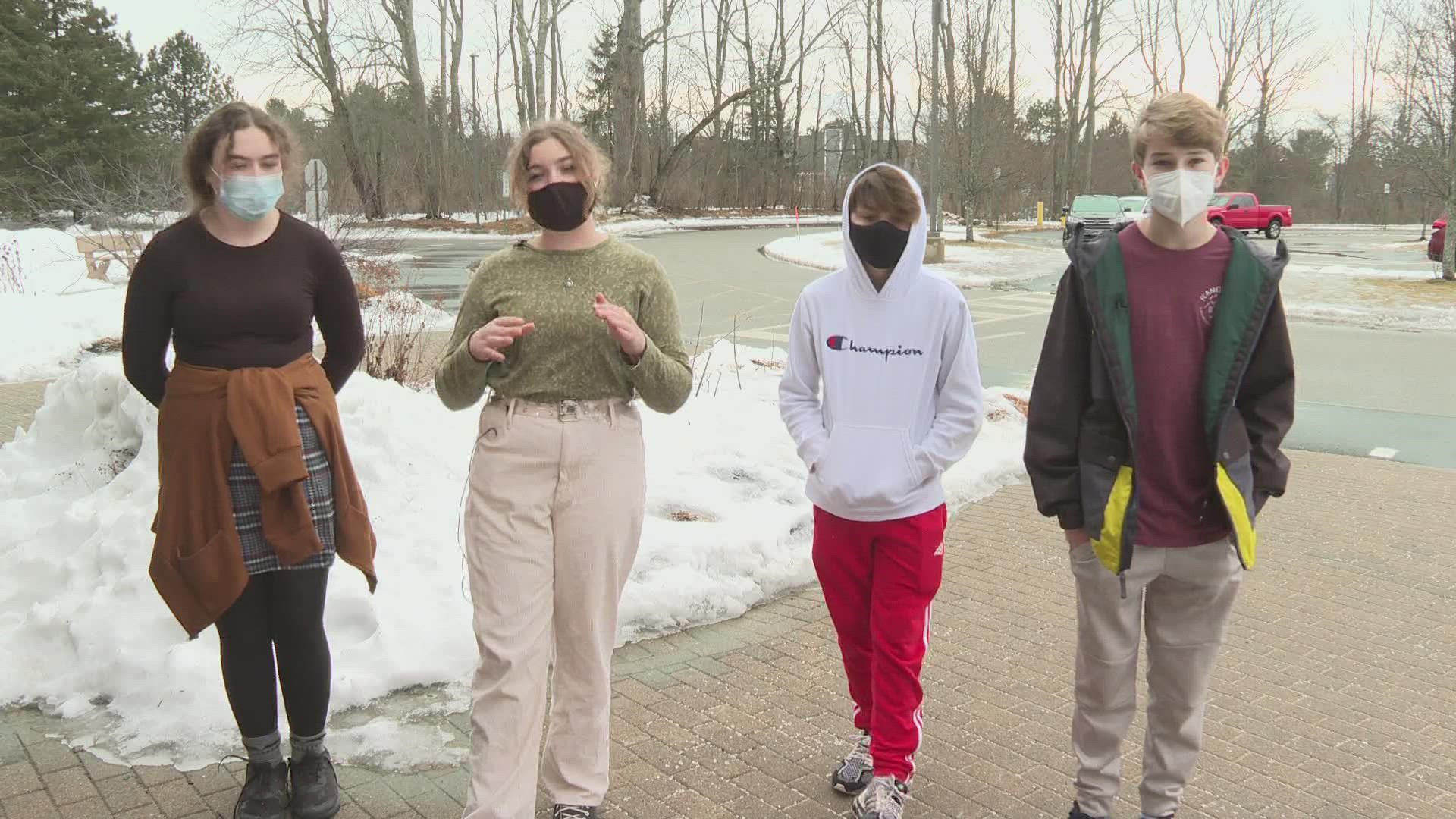CUMBERLAND, Maine — A group of middle school students in Cumberland has come up with an idea completely out of this world. A team of four from Greely Middle School students has been selected as winners in the NASA Student TechRise Challenge.
"We have done stuff with paper rockets this year, but this is on a whole new level. We get to actually send something into space," Greely Middle School eighth-grader Helen Kalinich said.
Kalinich, alongside her classmates Sam Palmlund, Erin Frost, and Jonathan LaPlante were chosen as winners in the national contest for their experiment idea. Their group is one of 57 teams from across the county that was selected. Nearly 600 teams representing 5,000 sixth-grade through 12th-grade students applied.
The competition is coordinated by the group Future Engineers, which hosts innovation challenges for students. After being chosen as winners for their experiment idea "stab science," it will now be built and tested on a NASA-sponsored suborbital rocket flight operated by Blue Origin or UP Aerospace.
"When we saw our name up there, I was super surprised and just very excited for the opportunity," Palmlund said.
The group's experiment idea that caught the attention of folks from NASA was to see how blood acts differently in microgravity compared to here on Earth. The students will see how gravity impacts the release of blood if someone gets a cut.
"When there is so little gravity that everything floats around, and it acts a lot different. And it acts a lot different than on Earth, where there's a lot of gravity," Palmlund said.
"So we're like, 'Someone could easily get cut or something while they're there.' So it's important to know what would happen if someone did get cut," Frost said.
The group will now work to build the experiment. NASA has sent them a 4x4x8 inch box, in which the experiment must fit. The winning teams will also receive $1,500 to develop their experiments.
The projects are expected to be launched into sub-orbit in early 2023. They plan to meet with individuals from NASA over the next several months to help them build, design, and complete their experiments. There will be approximately three minutes to conduct the experiment once it's in space before coming back down to Earth.

